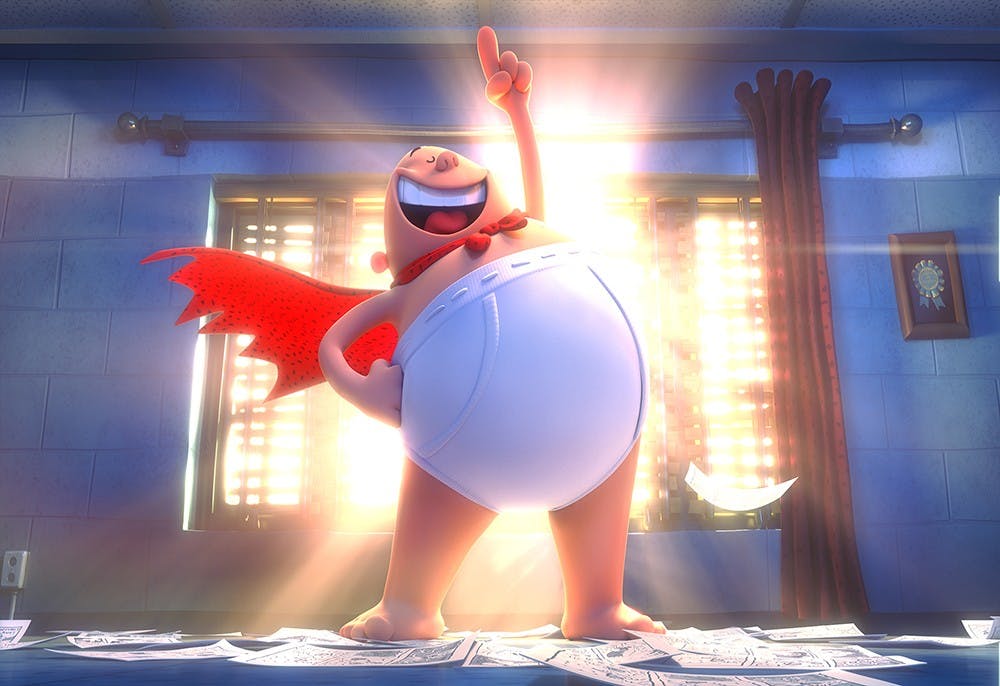Since the release of “The Adventures of Captain Underpants” in 1997, Dav Pilkey’s “Captain Underpants” book series have been repeatedly challenged by elementary school teachers, librarians and parents alike.
One of the reasons should be obvious from the get-go: the books are full of toilet humor some adults don’t want their children exposed to.
Ironically, the other reason is the series’ anti-authority themes.
Drawing from the author’s personal experiences, “Captain Underpants” books portray school as a place where teachers stifle children’s creativity in favor of mundane tasks.
At its core, the series is a celebration of childhood imagination.
While the newly released film successfully recreates the silliness of the books, its overblown nature prevents it from invoking those same feelings in an organic way.
“Captain Underpants” tells the story of two prankster best friends who make comic books about a superhero who fights crime in his underwear.
George (Kevin Hart) and Harold (Thomas Middleditch) frequently get in trouble with their grumpy principal Mr. Krupp (Ed Helms), but after their shenanigans reach a breaking point, he threatens severe disciplinary action.
In an act of desperation, George hypnotizes Mr. Krupp into believing he’s Captain Underpants, which the boys soon regret when he tries to fulfill his role as a scantily clad hero.
As an adaptation, the film does an excellent job of maintaining Pilkey’s signature pencil-drawn illustrations.
Similar to “The Peanuts Movie” (2015), “Captain Underpants” uses CGI to recreate its source material’s 2D art style in fluid 3D animation.
The film also features 2D animated scenes when it showcases the in-universe comic books drawn by the children.
These are some of the best parts of the movie because their shoddy art and spelling are an endearing way of emulating what a couple of kids would come up with.
In general, the film’s strengths come from its source material.
The stronger gags, like those featured on background signs and in George and Harold’s prank montage, are lifted almost directly from the books.
However, the film’s attempt to combine elements of four or five different books leads to awkward pacing.
Given the sheer amount of events, flashbacks and montages crammed into its 90 minutes, the movie’s quality is uneven, and the second half is especially weak.
The main villain’s development is rushed, and his motivation to stop children from laughing is hackneyed but not actually funny.
The addition of Mr. Krupp’s romantic subplot also feels entirely unnecessary; it simply isn’t fun.
Other aspects of the film, such as the climax’s emphasis on friendship and the typical pop soundtrack make “Captain Underpants” feel homogenized with animated films of the modern era.
In its transition to screen, “Captain Underpants” loses some of its identity, but the faithful aspects of the adaptation remain strong. It’s still a fun, light-hearted movie with some surprisingly clever moments.
But if you’re a nostalgic adult who just wants an excuse to revisit your childhood, remember that you can plow through three or four of the books in the same 90-minute span.
yhameed@umail.iu.edu
@yamham






